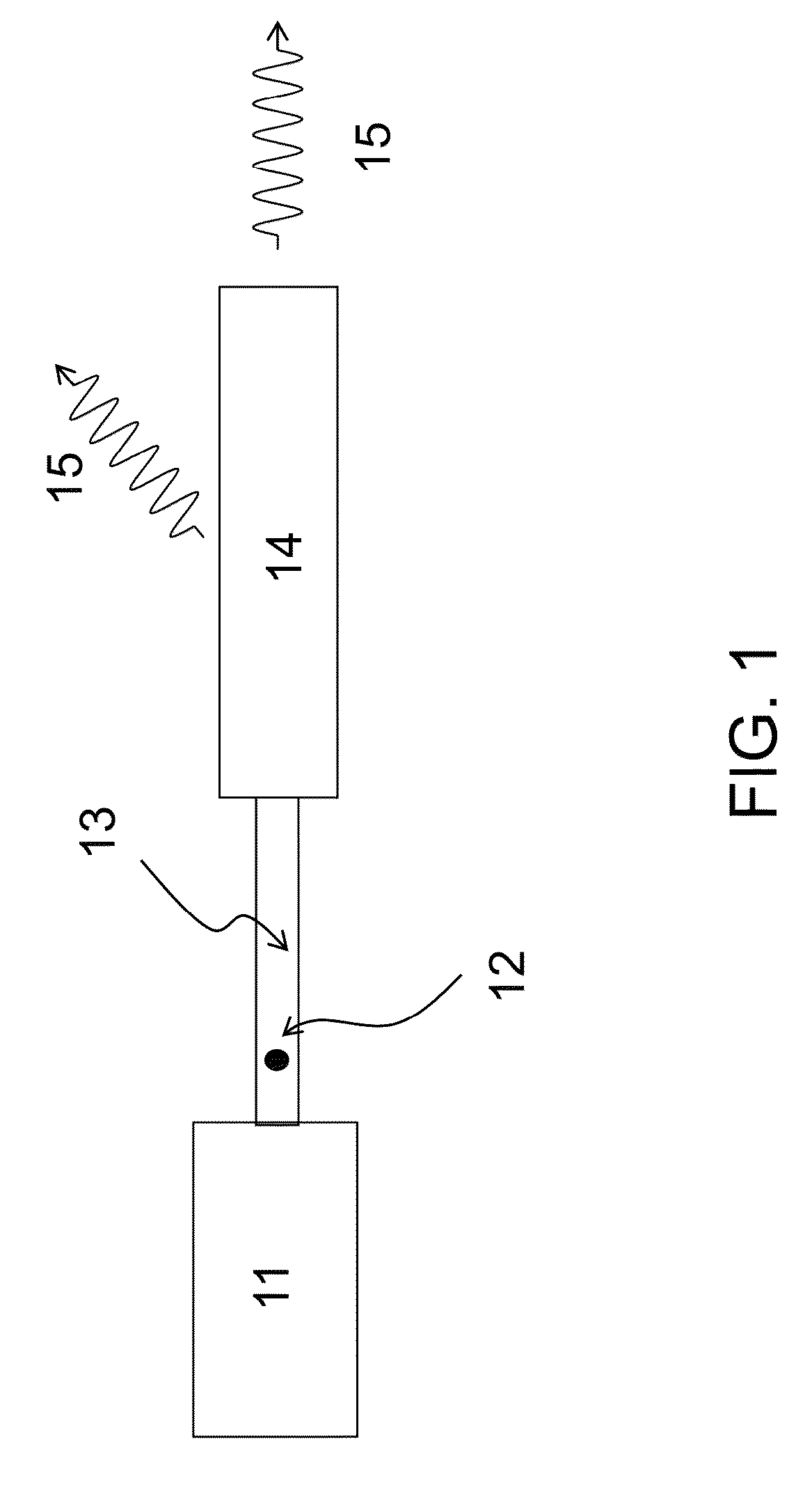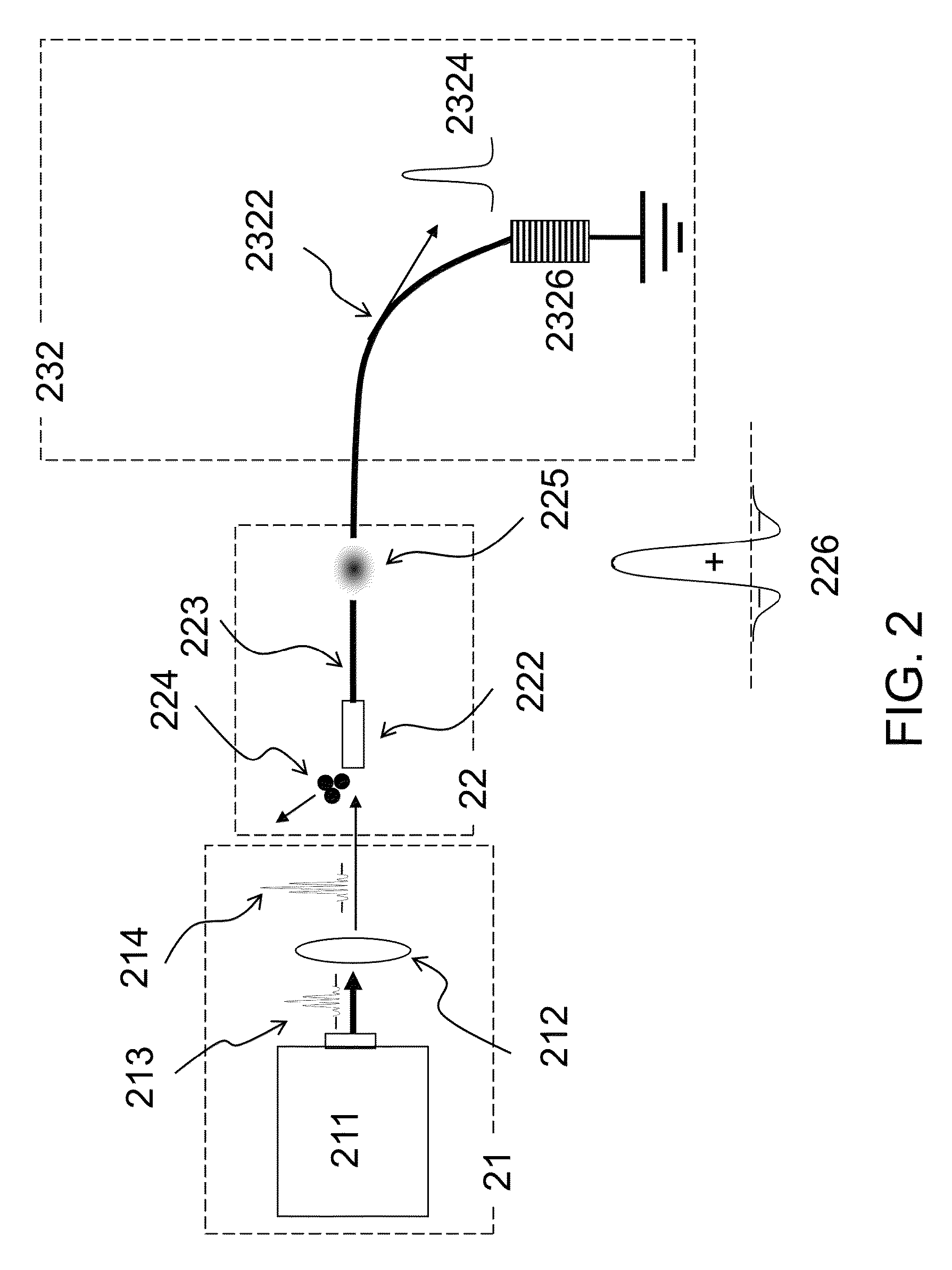Antenna system generating quasi relativistic radiation
a radiation system and quasi-relativistic technology, applied in the field of antenna systems, can solve the problems of dumping relativistic charged particles after applications impose serious x-rays, affecting the operation of relativistic radiation apparatuses, so as to avoid charge neutralization, prevent the generated radiation from being absorbed in air, and high laser intensity
- Summary
- Abstract
- Description
- Claims
- Application Information
AI Technical Summary
Benefits of technology
Problems solved by technology
Method used
Image
Examples
Embodiment Construction
[0032]The present invention will now be described more specifically with reference to the following embodiments. It is to be noted that the following descriptions of preferred embodiments of this invention are presented herein for the purposes of illustration and description only; it is not intended to be exhaustive or to be limited to the precise form disclosed.
[0033]Refer to FIG. 2, which shows an antenna system radiating a kind of quasi relativistic radiation, called “quasi bending-magnet radiation”, according to a first preferred embodiment of the present invention. The laser excitation unit 21 comprises a laser source 211 and a laser focusing device 212. The laser source 211 emits a short laser pulse 213, which is focused by the laser focusing device 212 and becomes a high intensity laser pulse 214 before entering a quasi charged particle generation unit 22. The quasi charged particle generation unit 22 contains a photoemitter or a photocathode 222 connected to a conducting wir...
PUM
 Login to View More
Login to View More Abstract
Description
Claims
Application Information
 Login to View More
Login to View More - R&D
- Intellectual Property
- Life Sciences
- Materials
- Tech Scout
- Unparalleled Data Quality
- Higher Quality Content
- 60% Fewer Hallucinations
Browse by: Latest US Patents, China's latest patents, Technical Efficacy Thesaurus, Application Domain, Technology Topic, Popular Technical Reports.
© 2025 PatSnap. All rights reserved.Legal|Privacy policy|Modern Slavery Act Transparency Statement|Sitemap|About US| Contact US: help@patsnap.com



